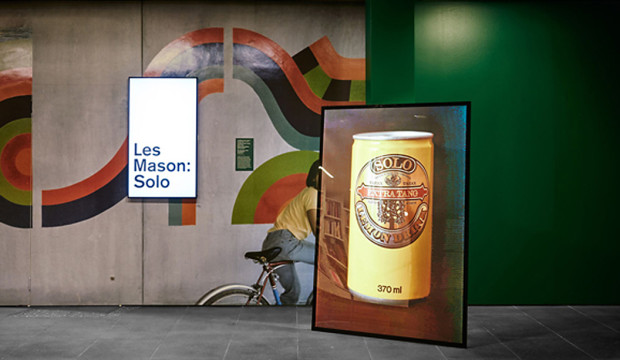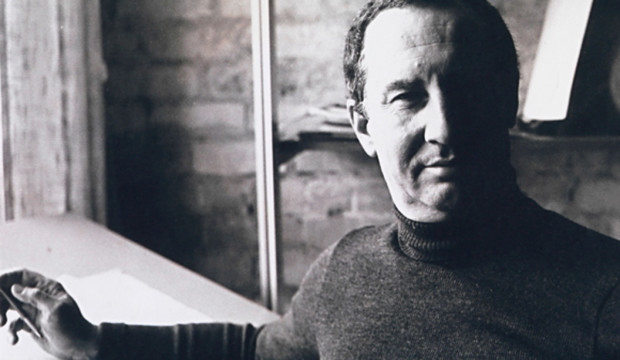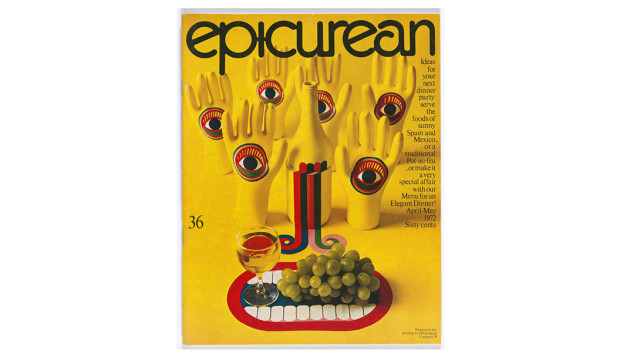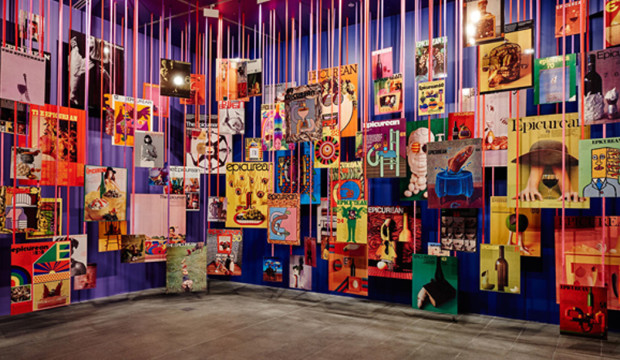Author: Tara Watson
Publication: desktop magazine online
Published: 20 November 2015
Before the days of Photoshop, undo’s and quick fixes, one artist using a hands-on approach revolutionised the graphic art industry through shifting attitudes to Australian design. Graphic art pioneer Les Mason was one of the first to establish the profession of graphic design in Australia and to mark the opening of the new National Gallery of Victoria (NGV) Design Studio, the NGV presents a retrospective of the artist’s prolific and durable design portfolio.
Les Mason: Solo highlights Mason’s significant body of work spanning over 30 years and his maverick attitude towards design and unstoppable quest for artistic perfection. Known to many as the father of graphic design in Australia, Les Mason: Solo exhibition showcases more than 200 designs and photographs, revealing design process and methods. “This exhibition celebrates Mason’s pioneering spirit and pervasive influence, highlighting his role as a seminal figure in graphic design, both as a practitioner and a provocateur,” said director of the NGV, Tony Ellwood.
The retrospective offers visitors a categorised timeline, tracking Mason’s move from California to Melbourne in 1961, drawing from archives of his evolving work contribution until his death 2009.

The exhibition presents Mason’s diverse scope of designs accomplished across packaging, corporate identity, advertising, architectural graphics and magazine. Highlights include the now classic Tarax Solo lemon soft drink packaging from 1975, the brand identity of Bowater Scott, Glo-weave visual merchandising material, Trusty Dog Food Packaging and more involved work with the State Bank of Victoria and the Salvation Army.
Wife, widower and artistic collaborator Gail Devine worked with the NGV in the curation of the exhibit and said she was thrilled seeing the final design space. Devine drew from her personal collection of Mason’s history of works from packaging, wine labels, architectural graphics, advertising and corporate design.
“I had all this work of Les’ and since he passed away it had been my task to make his memory alive again because he had done so much,” Devine reflects.
Mason outlook on design was diversified and informed by his background in fine art and interior design, drawing on these formative techniques when working on advertising, company identity works and developing processes. Devine adds that Mason started in the industry when “graphic design was just beginning. It was like the days of Mad Men. It was just starting to snowball in the States,” said Devine.
Bringing his unique vision to Australia, Mason opened his first studio in South Melbourne, producing commercial designs and establishing an unheard-of business model where design was in the hands of artists rather than the printers and agencies.
Mason catalysed studio based design practice and incorporated influences such as Dada, Op art and Surrealism into his designs, while establishing typography as a professional craft and breaking convention utilizing mediums such as sculpture in his works.
“I think Les showed what the profession of graphic design could be for all that came after him. How it stood in its own right. How it was as powerful as architecture. It’s a communication. It can connect with a person and be empathetic,” Devine remarked.
“It has got to be powerful and the best that it can be and that’s Les’ legacy: he couldn’t stand crap.”
Mason was a pioneering force behind artists thoughtfully examining the psychology of packaging and design in conceptual process, researching the psychology of gender and colour in consumer-decision making. Mason visited over 500 supermarkets in the US photographing food packaging to compile an advanced research library for reference.
Mason’s most pivotal contribution came from his work on the Epicurean magazine covers from 1966 to 1979. The 77 covers created by Mason remain as relevant and cutting edge as ever, appreciated for pushing the envelope of design norms and presenting graphic design as art; embracing in his work movements such as Arte Povera, Surrealism, Pop Art, geometric abstraction, colour field painting and Op Art.
“Epicurean was a unique process. It was a very select audience, the top food and wine writers. But they had little money to spend so he couldn’t spend the money on photographing food looking gorgeous with luscious photography, so he used his knowledge of fine art in his depictions of food, his knowledge of sculpture, photography and man-made construction,” said Devine.
“For each cover and issue he would develop a theme and go for it. It didn’t have anything to do with anything, usually some relationship to food but more or less it was a fine art depiction.”
Mason’s Salvation Army collaborations displayed at the end of the exhibition would go on to become some of his more controversial designs. Taking an emotive and evocative stance to raise the public profile of their annual Red Shield Appeal fundraiser, positioning confronting imagery, iconography and language as a platform for depicting the harsh realities of exclusion, social disadvantage and as Devine puts it the publics increasing “indifference to man”.
Les Mason: Solo final exhibit features Mason’s last work ‘Unplugged Faces AGI Conference Istanbul Poster’ created just before his death in 2009, inspired by his visit to the conference in Turkey with Devine, offering visitors a personal glimpse of Mason’s final days.
Devine said she was immensely grateful to the NGV for bringing Mason’s life’s work to new audiences, to learn more about the early days of graphic design in Australia and the people that paved the way for the industry that thrives today.
“It was a lot of work and it was very emotional,” said Devine. “People say to me it would have been cathartic, but for me it was more than that. I wanted Les to have the recognition that he deserved because he did so much for graphic design in Australia and he loved Australia. He never looked back when he came here. It was his home.”
Thanks to desktop for the approval to re-post this story.
_
Les Mason: Solo will be exhibited at the National Gallery of Victoria at the Ian Potter Centre from Friday, 6 November 2015 – 21 February 2016. Open daily, 10am-5pm. Free entry.

 Footy Tips
Footy Tips



